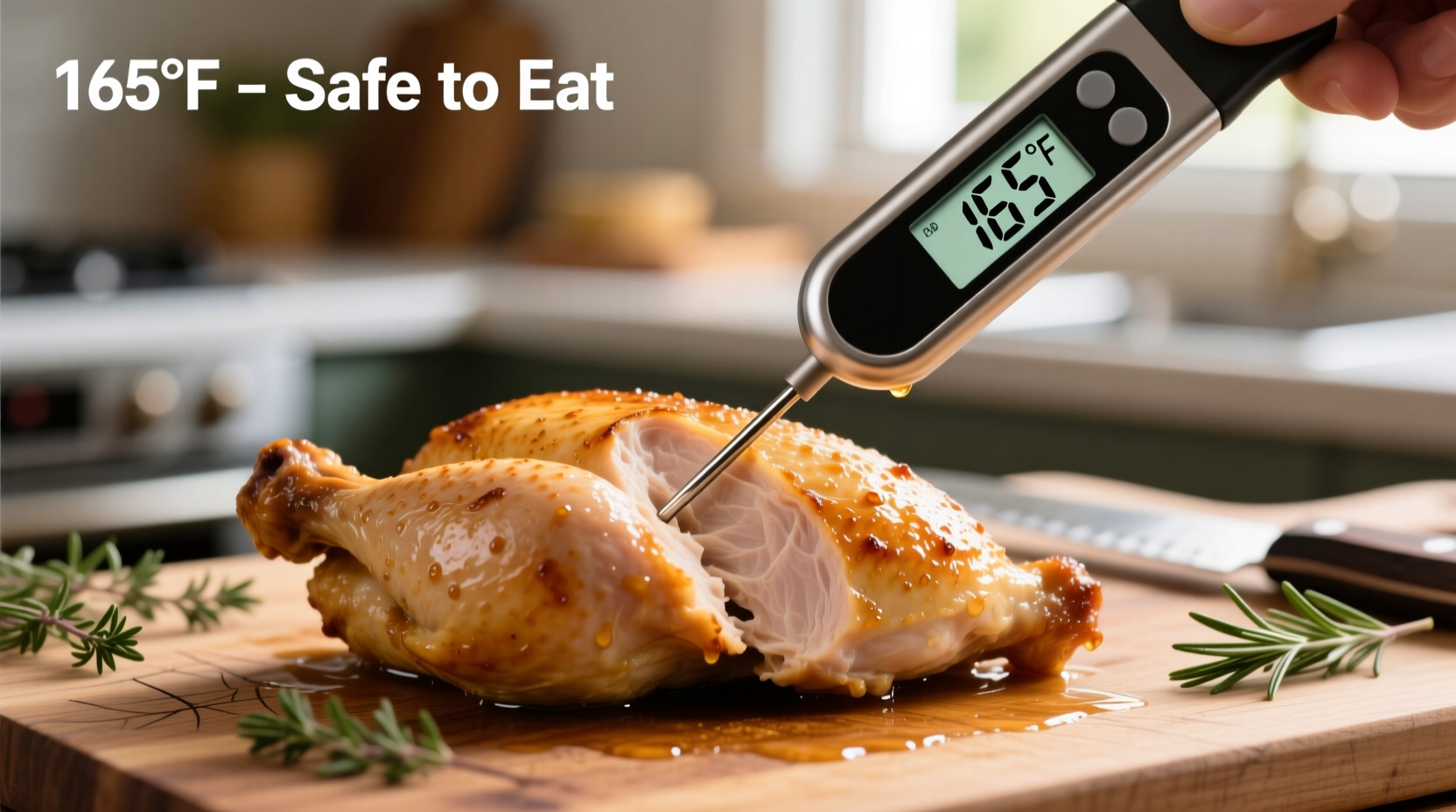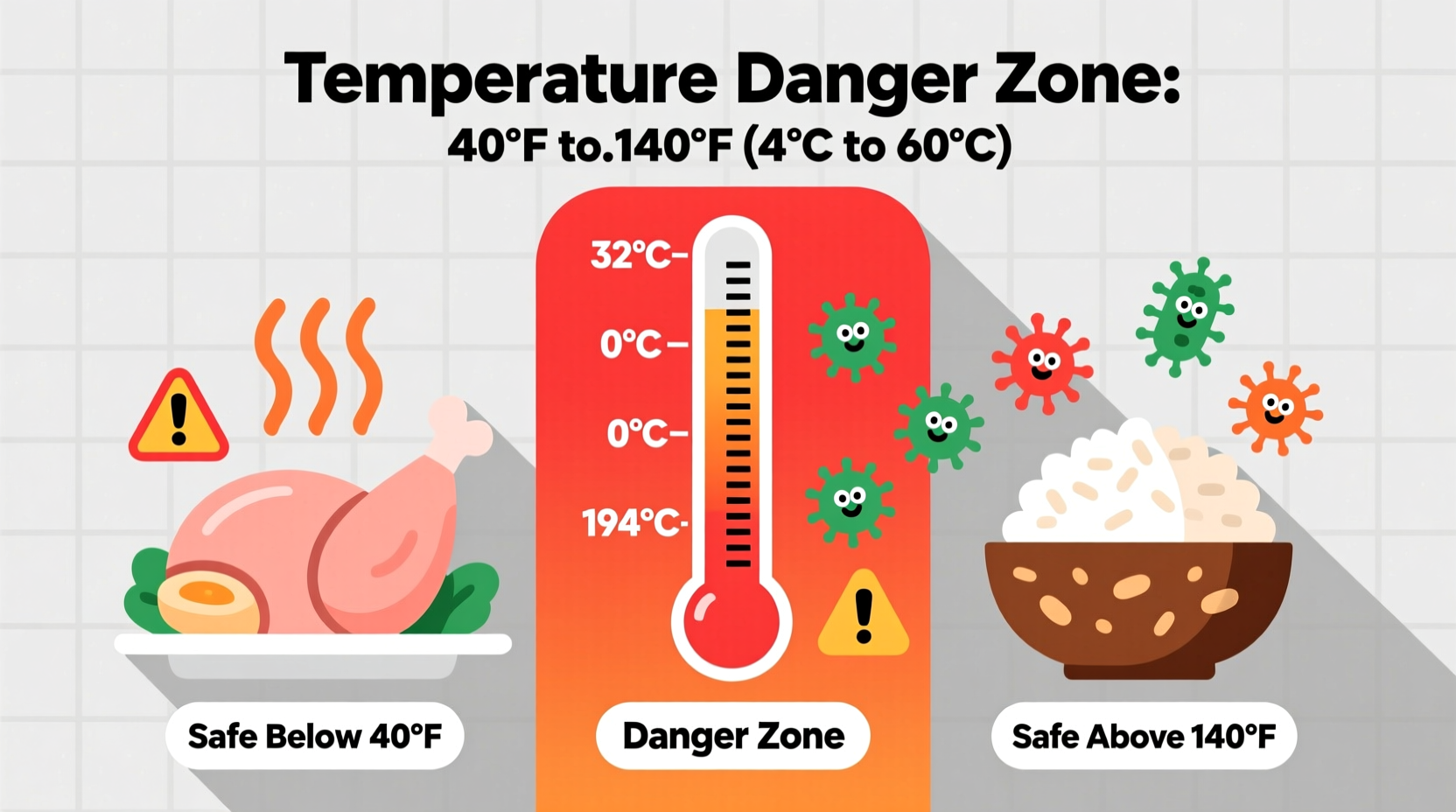The temperature danger zone for food is the range between 40°F (4°C) and 140°F (60°C) where harmful bacteria multiply rapidly. Keeping food out of this zone is critical for preventing foodborne illness, as pathogens like Salmonella and E. coli can double in number every 20 minutes within this temperature range.
Understanding the temperature danger zone isn't just kitchen trivia—it's your first line of defense against foodborne illness that affects 1 in 6 Americans annually. Whether you're meal prepping at home, catering an event, or running a restaurant, knowing exactly how to navigate this critical temperature range can prevent serious health risks and costly food waste.
Why the Temperature Danger Zone Matters for Your Health
When food sits in the danger zone, bacteria don't just grow—they explode in number. The USDA Food Safety and Inspection Service reports that pathogens like Salmonella, E. coli, and Listeria can double every 20 minutes in this temperature range. After just two hours in the danger zone, a single bacterium can multiply to over 16 million, creating potentially dangerous levels of contamination.
Consider this real-world scenario: that pot of soup you left on the stove while running errands? If it cooled from boiling to 120°F during your absence, it entered the danger zone where bacteria began multiplying exponentially. By the time you return, it may look and smell fine but contain enough pathogens to make you seriously ill.
The Science Behind Bacterial Growth in Food
Bacteria thrive in what scientists call the "danger zone" because these temperatures provide the perfect conditions for reproduction. Below 40°F, most harmful bacteria become dormant. Above 140°F, they begin to die off. But in between, they enter what microbiologists term the "exponential growth phase."
The Food and Drug Administration's Food Code explains that the most dangerous bacteria for food safety multiply fastest between 70°F and 125°F (21°C-52°C), though the full danger zone extends from 40°F to 140°F. This is why the "2-hour rule" exists—food shouldn't remain in the danger zone for more than 120 minutes (or 60 minutes when ambient temperatures exceed 90°F).
| Temperature Range | Bacterial Activity | Food Safety Status |
|---|---|---|
| Below 40°F (4°C) | Most bacteria dormant | Safe for storage |
| 40°F-70°F (4°C-21°C) | Slow bacterial growth | Danger zone - limit to 2 hours |
| 70°F-125°F (21°C-52°C) | Rapid bacterial multiplication | High-risk zone - minimize exposure |
| 125°F-140°F (52°C-60°C) | Slowing growth, beginning to die | Danger zone - still unsafe |
| Above 140°F (60°C) | Bacteria die rapidly | Safe for serving |
Practical Temperature Guidelines for Everyday Food Safety
Knowing the danger zone is only half the battle—you need specific temperature targets for different food handling scenarios:
- Cooking: Poultry must reach 165°F (74°C), ground meats 160°F (71°C), and fish 145°F (63°C) to be safe
- Hot holding: Keep hot foods at 140°F (60°C) or above using chafing dishes, slow cookers, or warming trays
- Cooling: Refrigerate leftovers within 2 hours (1 hour if room temperature exceeds 90°F/32°C)
- Refrigeration: Maintain your refrigerator at 40°F (4°C) or below—use an appliance thermometer to verify
A common misconception is that you can judge food safety by appearance or smell. The Centers for Disease Control and Prevention (CDC) emphasizes that harmful bacteria don't always change a food's appearance, smell, or taste. The only reliable method is using a food thermometer to verify temperatures.

Avoiding Common Danger Zone Mistakes
Even experienced cooks make these temperature danger zone errors:
Room Temperature Misconceptions
"Room temperature" varies significantly by climate and season. During summer months, indoor temperatures often exceed 75°F (24°C), accelerating bacterial growth. The FDA recommends reducing the safe holding time to one hour when ambient temperatures are above 90°F (32°C).
Improper Thawing Methods
Thawing food on the counter allows the outer layers to enter the danger zone while the center remains frozen. The USDA Food Safety and Inspection Service recommends three safe thawing methods: in the refrigerator, in cold water (changed every 30 minutes), or in the microwave with immediate cooking afterward.
Incorrect Cooling Practices
Large pots of soup or stew take too long to cool in the refrigerator, keeping the entire batch in the danger zone for hours. Divide large quantities into shallow containers no deeper than 2 inches for faster, safer cooling.
Essential Tools for Temperature Control
Investing in the right tools makes avoiding the danger zone simple:
- Digital instant-read thermometer: Provides accurate readings in 10-15 seconds (critical for checking multiple spots in large items)
- Appliance thermometer: Monitors actual refrigerator and freezer temperatures (built-in dials are often inaccurate)
- Cooler with ice packs: Maintains safe temperatures during transportation (keep at 40°F or below)
- Timer: Essential for tracking how long food has been in the danger zone
When using thermometers, proper placement matters. For thick foods like roasts, insert the probe into the thickest part, avoiding bone, fat, or gristle. For thin foods like hamburgers, insert sideways through the edge. Always clean thermometer probes with hot, soapy water between uses to prevent cross-contamination.
Special Situations and Temperature Challenges
Certain scenarios require extra temperature vigilance:
Outdoor Cooking and Events
At picnics or barbecues, the danger zone becomes even more critical. The FoodSafety.gov website notes that food left out in temperatures above 90°F can become unsafe in just one hour. Keep cold foods in coolers with ice packs and position them in shaded areas. Use insulated containers for hot foods and check temperatures regularly.
Travel and Transportation
When transporting food, maintain the cold chain. The USDA recommends keeping coolers closed as much as possible—each opening raises the internal temperature significantly. For hot foods, use insulated containers that maintain temperatures above 140°F. Never leave perishable foods in a hot car.
Vulnerable Populations
For infants, elderly individuals, pregnant women, and immunocompromised people, even small amounts of pathogens can cause serious illness. The FDA advises extra precautions for these groups, including cooking eggs until both yolk and white are firm (not just to 145°F) and avoiding raw sprouts entirely.
Temperature Danger Zone Myths Debunked
Several common beliefs about food safety are dangerously incorrect:
- "If it smells fine, it's safe to eat": Pathogenic bacteria often don't produce odors. Rely on time and temperature, not your nose.
- "A little pink in the middle is okay": Color is unreliable—ground beef can appear brown before reaching safe temperatures or remain pink after.
- "Leftovers are good for a week": Most leftovers should be consumed within 3-4 days, even when refrigerated.
- "Hot food shouldn't go in the fridge": Modern refrigerators handle hot food safely if properly portioned.
According to research published in the Journal of Food Protection, nearly 40% of consumers rely on visual cues rather than thermometers to determine food safety—a practice that significantly increases risk of foodborne illness.
Building a Food Safety Mindset
Mastering the temperature danger zone requires shifting from reactive to proactive food handling. Instead of asking "Is this still good?" ask "How can I keep this out of the danger zone?" This preventative approach transforms food safety from a checklist into a natural part of your cooking process.
Professional kitchens use the "time-temperature" principle: every food item has a maximum safe time in the danger zone. By tracking both time and temperature, you gain precise control over food safety. Start implementing these practices today, and you'll significantly reduce your risk of foodborne illness while gaining confidence in your food handling skills.











 浙公网安备
33010002000092号
浙公网安备
33010002000092号 浙B2-20120091-4
浙B2-20120091-4